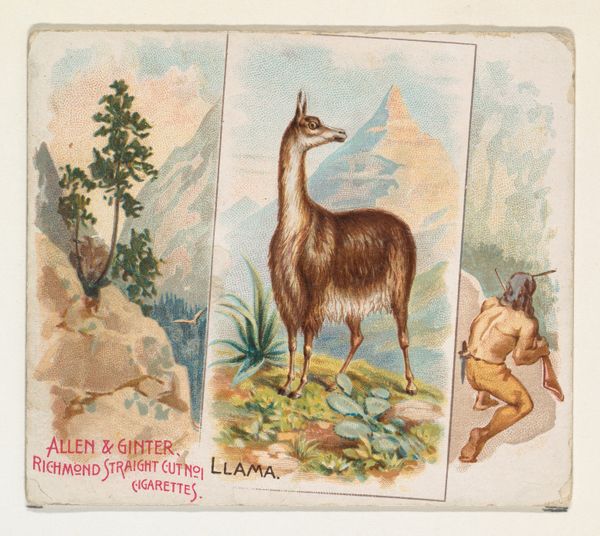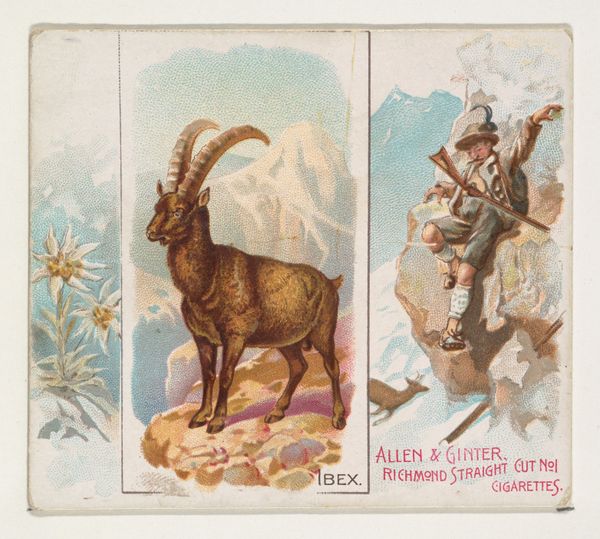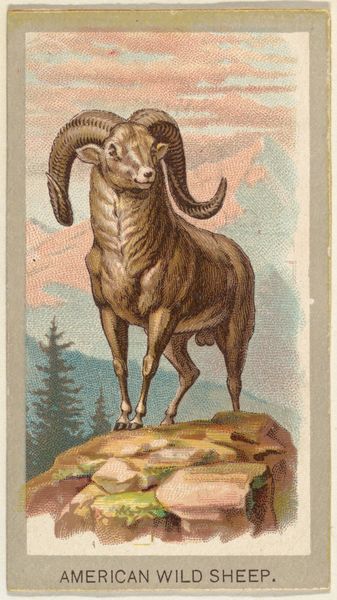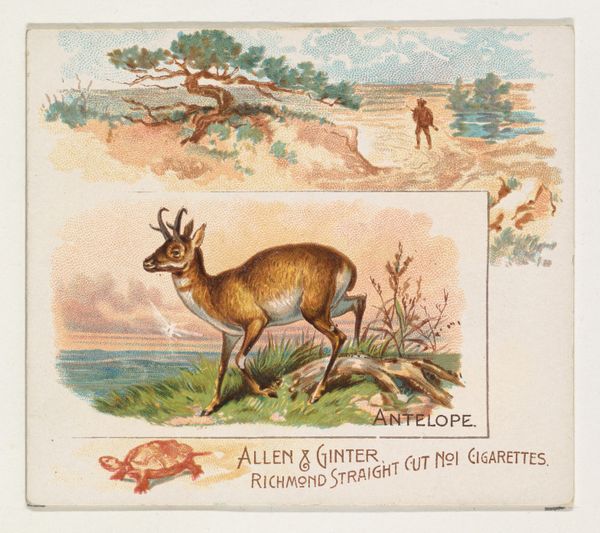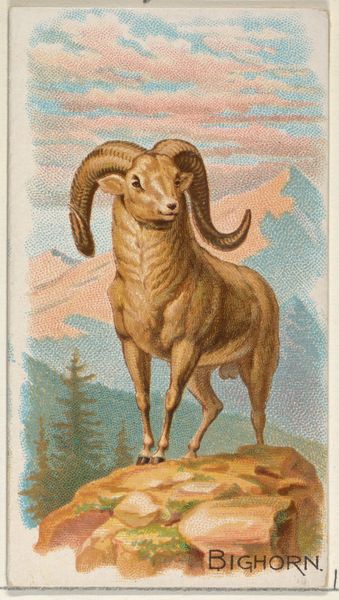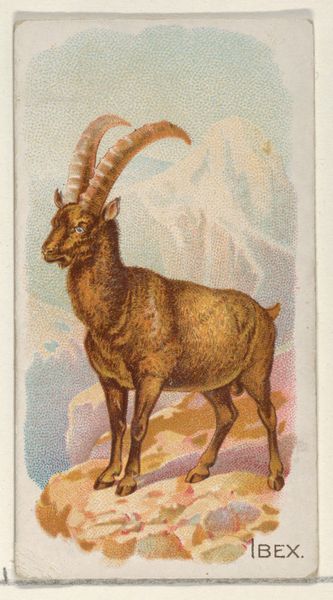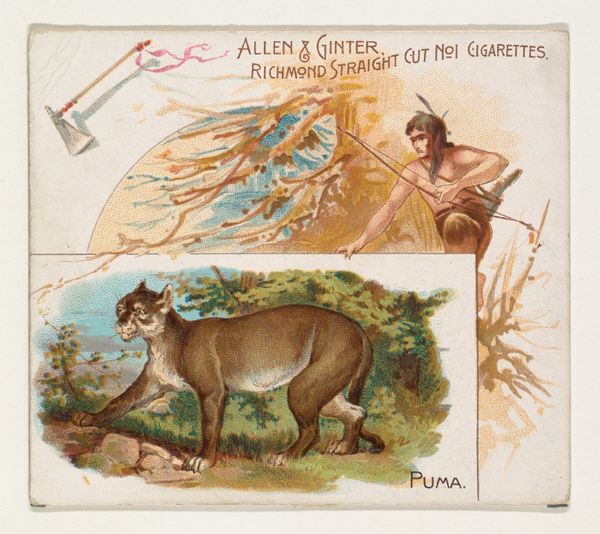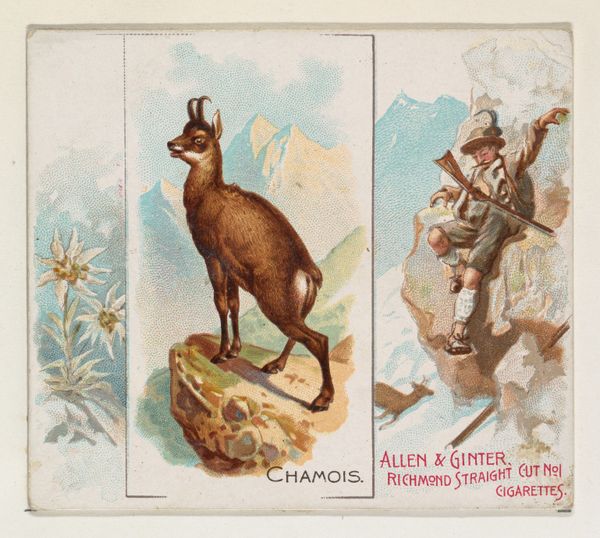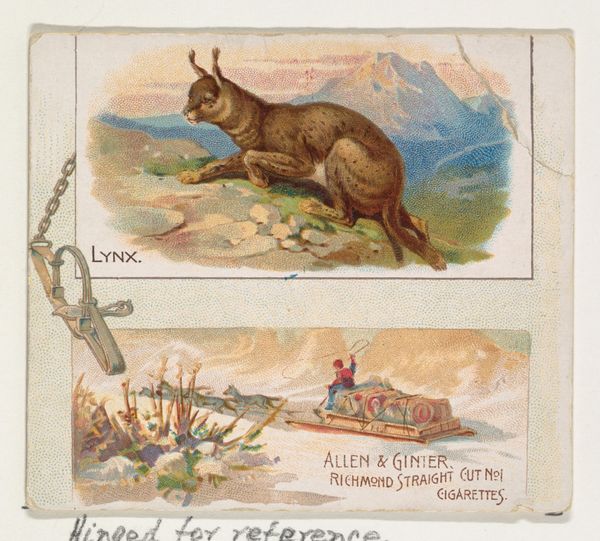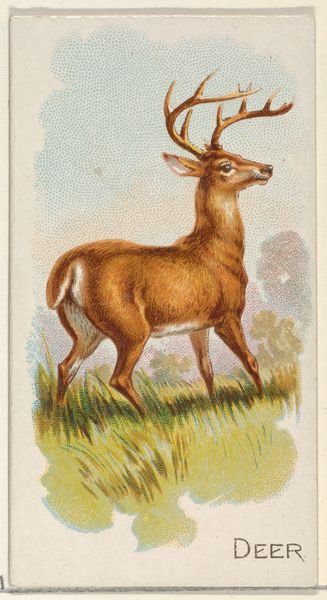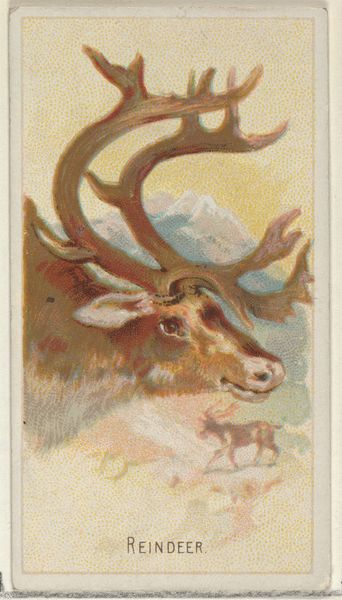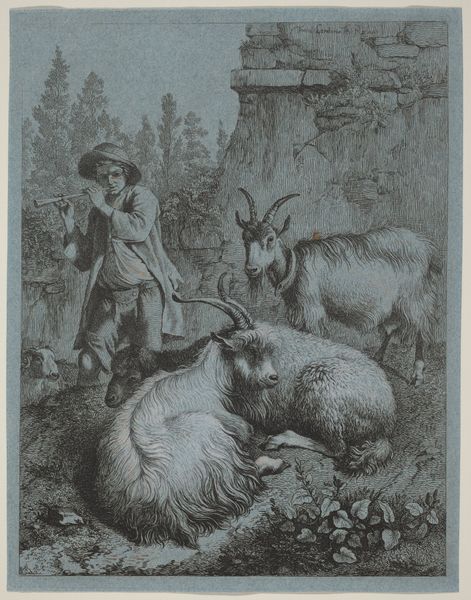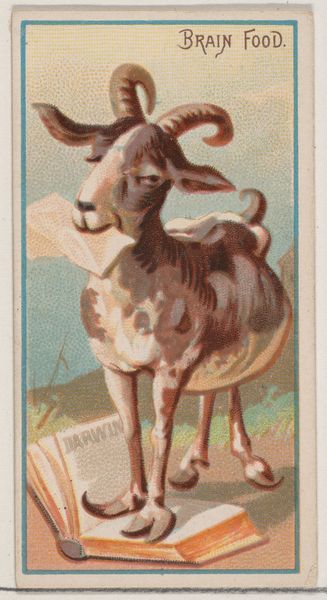
Bighorn, from Quadrupeds series (N41) for Allen & Ginter Cigarettes 1890
0:00
0:00
drawing, coloured-pencil, print
#
drawing
#
coloured-pencil
#
water colours
# print
#
impressionism
#
landscape
#
figuration
#
coloured pencil
#
watercolour illustration
#
watercolor
#
realism
Dimensions: Sheet: 2 7/8 x 3 1/4 in. (7.3 x 8.3 cm)
Copyright: Public Domain
Editor: So, this is “Bighorn, from Quadrupeds series (N41) for Allen & Ginter Cigarettes” from 1890. It’s a print, and it looks like it might have colored pencil or watercolor, too. It seems really interesting that they included it in a cigarette pack. I guess it's some kind of advertisement, but what kind of message were they trying to send? What do you make of the imagery here? Art Historian: That's a keen observation! Indeed, cigarette cards like this one functioned as both advertisement and collectible art. This image layers the symbol of the bighorn sheep with representations of westward expansion. Allen & Ginter cigarettes suggest virility and ruggedness. What resonates with me is the way it intertwines animal power with what seems to be indigenous presence and a frontier landscape. It evokes the concept of taming nature. Do you think this juxtaposition reinforces or challenges the prevailing narrative of progress at that time? Editor: That’s a really great question! I guess at first glance, it seems to be reinforcing those narratives since the hunter appears poised to conquer both the land and the animal. The bighorn stands prominently, but feels staged for the hunter. Do you see any tension in the composition, or perhaps, an alternative reading? Art Historian: I'm drawn to the bighorn’s gaze—noble and steadfast—which stands in stark contrast to the more frenzied energy of the hunter. This could reflect a collective memory of respect and acknowledgement of the animal’s place, an echo of indigenous views before those attitudes were reshaped by commercial agendas and settlement. Perhaps the composition itself bears a trace of this duality. Consider how each element seems almost compartmentalized. What does that tell you? Editor: That's such a helpful perspective! The division in the frame certainly presents both figures very differently. It gives an alternative, but silent narrative. It seems I've only considered one reading so far, and there's so much more hidden under the surface of such art. Art Historian: Precisely. The true power of visual symbols lies in their ability to evoke layers of meaning over time. Considering those layers really enriches our experience of any piece. Editor: I agree; I feel I'll certainly adopt a different lens through which to interpret any image from now on!
Comments
No comments
Be the first to comment and join the conversation on the ultimate creative platform.
